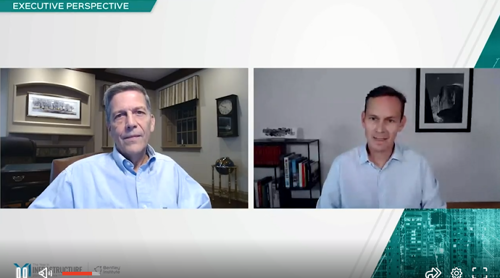Bentley Systems 2020 YII: Transformation across industry—Day 2
Wednesday morning, Bentley Systems continued its Year in Infrastructure 2020 Conference, featuring a virtual experience that highlights executive perspectives, moderated and interactive sessions and summits, key learnings, and the company’s annual presentation of its YII Awards.
On Wednesday, October 21, in addition to a full day of valuable presentations, discussions and presentations, Bentley broadcast its YII 2020 Awards Ceremony at 12:30 pm EDT. After careful deliberation by independent expert juries (including editors from Hydrocarbon Processing), the winners of the YII 2020 Awards were announced in a live global broadcast.
Executive perspectives. During Wednesday morning’s “Executive Perspective: Digital Twins,” Bentley’s Chief Technology Officer Keith Bentley and Chief Product Officer Nicholas Cumins exchanged ideas about how data accessibility, data interoperability and open standards underpin the shift to digital twins, which are now reshaping how infrastructure is designed, constructed and operated.

Bentley's Chief Technology Officer Keith Bentley (left) and Chief Product Officer Nicholas Cumins.
Digital twins have become possible due to the convergence of engineering technology, information technology and operations technology. The volume of data, as well as managing constant and dynamic change, is simply overwhelming for infrastructure professionals, whether in project delivery or operations. In close collaboration with many leading players in the infrastructure community, Bentley has built a platform to bring project and asset data together to support all stages of an infrastructure asset’s lifecycle. Leading design and construction firms, along with owner-operators, are leveraging digital twins, and new business model opportunities are emerging.
Mr. Cumins began the conversation by asserting that while digital twin technology has become mainstream across multiple industries, there may be some that are unfamiliar with the definition of digital twin in the infrastructure space. Mr. Bentley offered some clarification.
“If a concept has an ISO committee for it, that means that it’s real,” he quipped, “and digital twins have finally reached that point. In the world of infrastructure digital twins, it is less clear what everyone would mean. Generally, when people refer to digital twin, they are talking about is an electronic virtual representation of the physical world, which would have enough information to understand not only what something is and how it looks, but how it works and the functional capabilities.”
With regard to the infrastructure digital twin, Mr. Bentley said that he thinks it is most important for the digital twin to be synchronized with the physical world, which changes constantly. “These are very large assets and they last a long time, so if we’re going to use a digital twin to make business and operational decisions, it has to reflect accurately what is in the real world.”
After Mr. Cumins asked about the real value of a digital twin, Mr. Bentley said that one of its benefits is that it can be used to make decisions about planning for probable eventualities. Those types of decisions are made each day, but they are often made from old data or human intuition, he said, stressing that the optimum methodology is to use the digital model to help us understand what changes in the real world impact what we do. “Long term, I think we will find additional problems that can be solved by simply using the models in the digital twin.”
Bentley has been both promoting the idea of digital twins and actually building the required technologies. Mr. Cumins posed the question, “What have we learned?”
“One of the values of a digital twin is the reliability and quality of the data,” Mr. Bentley said. “A few years ago, we were talking about all the information that was being created, specifically in the engineering process, and how it is incapable of being repurposed for the digital twin concept.”
Bentley has learned that data is very valuable, but it must be structured, created and synchronized in a form that is reliable. There is strong motivation to make the jump from the old processes to the digital twin process, and companies that have done it have found great value. Another key learning was that it is not as difficult a change as previously thought: companies do not have to stop doing things the old way and start with a whole new set of processes. The old approach was fine for what needed to be done, but industry is finding new ways to do new things.
“The digital representation of things has become the norm, and the lessons we have learned about how to make things work better digitally will carry forward,” Mr. Bentley said. “2020 is a pivotal year, and the beginning of what I think will be the digital revolution around business processes.”
Extended agenda. Utilizing a top-notch virtual platform, the Bentley presentations continue on October 27 with the ACCELERATE program of more than 190 sessions covering 32 Bentley brands. ACCELERATE provides an opportunity to learn about the latest advancements in Bentley applications and cloud services. Senior product executives and their leadership teams will review their latest innovations and provide guidance.
Additionally, on November 3–12, the second and third installments of Bentley’s TwinTalks’ series explore the implications of digital twins for design and construction, digital plants, energy utilities, digital cities, rail and transit, and roads and bridges. Listen to interactive panel discussions with leading industry and business leaders and discover the fascinating opportunities that digital twins introduce for each of these critical infrastructure sectors.






Comments